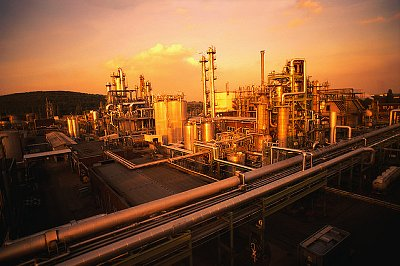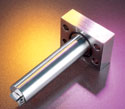Boston—Machinery failures, downtime and maintenance labor costs can kill a refiner’s bottom line profits. A major US oil company with refinery installations in North and South America has installed several Cambridge Viscosity VISCOpro viscometers to monitor oil viscosity, providing engineers with real-time information on oil quality. The viscometers utilize Cambridge’s 392 process sensors and are Class 1 Div 1 Group B, C, and D certified.
Major Refinery Improves Profitability with Viscosity Monitoring
Apr 1, 2019 10:00:00 AM / by Admin posted in process viscometers, 392 sensor, oil viscosity, monitor viscosity, refining, VISCOpro1600, compressor viscosity
High Temp, High Shear Viscometers For Asphalt Viscosity Control
Jun 19, 2018 11:00:00 AM / by Admin posted in 392 sensor, refining, VISCOpro1600, high pressure viscometer, asphalt viscosity
FOR IMMEDIATE RELEASE
Cambridge Flanged Viscometer Registered in ABSA Program
May 9, 2018 12:00:00 PM / by Admin posted in process viscometers, 392 sensor, oil viscosity, refining, marine fuel
Boston—Cambridge Viscosity’s flanged viscometer, or SPL/C 392 sensor, has been accepted for registration in the Alberta Boilers Safety Association (ABSA) Design Registration Program. This designation certifies that the sensor design complies with the Safety Codes Act.
“Being accepted into ABSA’s program certifies that the SPL/C 392 sensor can be used in high pressureenvironments up to 1400 PSI,” says Cambridge Director of Engineering Daniel Airey. “This sensor is particularly effective for marine fuel, oil pipelines and refineries.”
The SPL/C 392 in-line viscometer provides continuous, real-time measurement of temperature and viscosity. The sensor’s patented technology is based upon a simple, reliable electromagnetic concept. Two coils pull a piston back and forth within a constantly refreshed sample of process fluid. Proprietary circuitry analyzes the piston’s travel time to measure absolute viscosity. A built-in resistance temperature detector (RTD) senses the actual temperature in the measurement chamber.
Measurements can be made in any of the 13 different 20:1 viscosity ranges, covering a span of 0.2 to 20,000 cP. The sensor is designed with a four-bolt stainless steel SAE Code 61 flange and is easily installed in pipelines ranging from 2” and larger. The sensor’s self-cleaning feature provides for low-maintenance and ease-of-use across applications.

About Cambridge Viscosity
Cambridge Viscosity is the leading supplier of automated viscometers used by oil exploration and refining, coating, chemical and life science companies to optimize product and process performance. Cambridge Viscosity's sensors and viscometer systems conform to ASTM, DIN, JIS and ISO standards, with a range of models designed to meet specific industry and application needs.
Type certifications include ATEX, CE and FM. CSA certification is available upon request. Cambridge's global reach provides application engineering support and service wherever and whenever needed. To learn more visit www.cambridgeviscosity.com.
Viscosity Management in Group B, C and D Hazardous Locations
Jul 20, 2017 8:21:00 AM / by Admin posted in 392 sensor, oil analysis, 374 sensor, 372 sensor
Boston—Cambridge viscometers can now be used in Gas Group B hazardous locations in addition to Group C and D hazardous environments. This extension of approvals to Class 1, Division 1, Groups B, C, and D applies to the entire family of in-line 300-series sensors made by Cambridge Viscosity. These are the primary sensors used in refining, exploration, petrochemical and chemical processes, including both standard and high temperature sensors.
The new Gas Group B classification enables these sensors to be used in hazardous locations, which include hydrogen, fuel and combustible process gases containing more than 30% hydrogen by volume or gases of equivalent hazard. Groups C and D include environments that may contain carbon monoxide, ether and hydrogen sulfide, or for Group D, gasoline, acetone, ammonia, benzene, butane, natural gas, propane and other gases of equivalent hazard.
“We are pleased that our 300 sensors have been approved for Gas Group B use. Our sensors have been Group C and D classified for years, but being approved for the more stringent hydrogen environments allows us to provide viscosity management solutions to a whole new segment of customers,” says Cambridge Director of Engineering Daniel Airey.
Cambridge 300 sensors are used in a wide variety of industries for in-line and in-tank applications. Cambridge’s viscometers are well suited to the rigors of harsh environments due to their robust, durable design and construction.

About Cambridge Viscosity
Cambridge Viscosity is the leading supplier of automated viscometers used by oil exploration and refining, coating, chemical and life science companies to optimize product and process performance. Cambridge Viscosity's sensors and viscometer systems conform to ASTM, DIN, JIS and ISO standards, with a range of models designed to meet specific industry and application needs. Certifications include ATEX, CE, and FM. CSA certification is available upon request. Cambridge's global reach provides application engineering support and service wherever and whenever needed. To learn more visit www.cambridgeviscosity.com.
Online Viscometer Ideal for Gas Compressor Lubrication Oil
Jan 30, 2017 10:10:00 AM / by Admin posted in process viscometers, lube oil, 392 sensor, lube oil viscosity, oil analysis, compressor viscosity
FOR IMMEDIATE RELEASE







